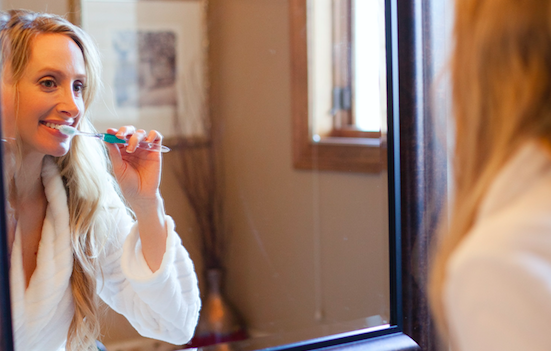Toothbrushing and Controlling Plaque

Why is plaque a problem?
When oral hygiene is subpar or nonexistent, plaque deposits remain along and below the gumline. Left undisturbed, the bacterial composition of these plaque deposits changes from relatively benign to more pathogenic (i.e. disease-causing). This can lead to inflammation and bleeding of the gums (i.e. gingivitis). If untreated, gingivitis can even progress in susceptible people to periodontitis (i.e. gum disease or pyorrhea) and ultimately lead to tooth loss. Also, in many people undisturbed plaque mineralizes to form dental calculus (i.e. tartar), which can increase the severity of gum disease. Another serious problem associated with undisturbed plaque is that it can harbor acid-producing bacteria that result in tooth decay (i.e. dental caries), which is the most widespread disease throughout the world.
Why is daily toothbrushing essential for plaque control?
For these reasons daily toothbrushing is regarded by dental professionals as the hallmark of plaque control, and it is the most frequently recommended self-care method. In 1950 a clinical study was published showing less tooth decay when brushing was performed immediately after meals.1 Ever since, the dental profession has recommended brushing after meals. This could be less than ideal, however, as more recent evidence shows that, if brushing is performed immediately after ingesting acidic foods or beverages, it can contribute to the removal of acid-softened tooth enamel and dentin, and result in permanent tooth wear (abrasion) damage. Therefore, if acidic foods or beverages are consumed, it is advisable to brush before eating or to wait for at least 60 minutes after eating to allow saliva to remineralize previously eroded enamel and dentin to its original state.2
What are the recommended time, frequency, and technique for toothbrushing?
Various studies have shown that longer brushing times (up to 4 minutes) and more frequent brushing (several times per day) can slightly increase plaque removal, but the increased benefits are marginal. Thus, the American Dental Association (ADA) recommends brushing for 2 minutes twice daily in order to disrupt plaque and prevent it from becoming pathogenic. A variety of different brushing techniques have been proposed and evaluated over the years, but most dental professionals and the ADA recommend placing a soft-bristle toothbrush at a 45° angle against the gums and gently moving back and forth in short (tooth-wide) strokes, taking care to brush the outer, inner, and chewing surfaces of all teeth. Actually, the thoroughness of toothbrushing rather than frequency or brushing time is more important for plaque control and maintenance of oral health.
Extensive research during the past half century has established that dental plaque must be controlled for good oral health. Although plaque cannot be completely eradicated, it can be controlled with daily oral hygiene measures, especially toothbrushing. Thus, most dental professionals recommend twice daily brushing with a soft-bristle toothbrush and gentle toothpaste. The gentle cleaning power of refined kaolin clay in Dentisse Natural Reflection Toothpaste makes it a perfect choice.
1 Fosdick LS. The Reduction of the Incidence of Dental Caries. I. Immediate Toothbrushing with a Neutral Dentifrice. J Am Dent Assoc 40:133-143, 1950.
2 Attin T, Hornecker E. Tooth Brushing and Oral Health: How Frequently and When Should Tooth Brushing be Performed? Oral Health Prev Dent 3:135-140, 2005.